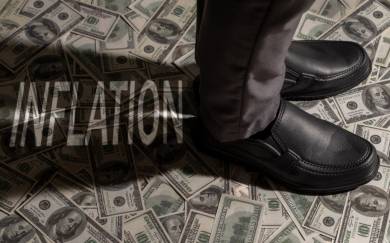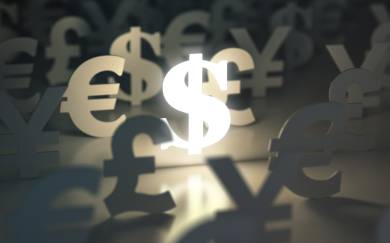COT Currency Speculator Sentiment rising for Euro & British Pound Sterling

Invest Macro 24.01.2022 11:36
By InvestMacro | COT | Data Tables | COT Leaders | Downloads | COT Newsletter
Here are the latest charts and statistics for the Commitment of Traders (COT) data published by the Commodities Futures Trading Commission (CFTC).
The latest COT data is updated through Tuesday January 18th and shows a quick view of how large traders (for-profit speculators and commercial entities) were positioned in the futures markets. All currency positions are in direct relation to the US dollar where, for example, a bet for the euro is a bet that the euro will rise versus the dollar while a bet against the euro will be a bet that the euro will decline versus the dollar.
Highlighting the COT currency data is the trend changes in speculator sentiment we are seeing in the Euro and the British pound sterling. Speculators have been boosting their bets for the Euro and pound sterling over the past weeks and have now pushed their bets in both currencies to their best levels since September.
Euro positions have gained for five consecutive weeks (a 5-week total rise of +36,463 contracts) and have now been in bullish territory for two straight weeks after spending thirteen out of the past fourteen weeks in bearish territory. This week’s net position of +24,584 contracts marks the best position since September 14th when positions were in a downtrend and on their way into negative territory.
British pound speculator bets, meanwhile, have risen sharply with four straight weeks of gains (a 4-week rise by +57,439 contracts) and have now settled into a current position of just -247 net contracts. The net position had been at a multi-year bearish high of -57,686 contracts as recently as December 21st before a turnaround in sentiment.
Free Reports:
Top 5 Companies Added to Our Stock Watch List this Quarter - Here are the Stock Symbols that stood out so far in the fourth quarter of 2021.
Get our Weekly Commitment of Traders Reports - See where the biggest traders (Hedge Funds and Commercial Hedgers) are positioned in the futures markets on a weekly basis.
Joining the Euro (18,579 contracts) and British pound sterling (28,919 contracts) with positive changes this week were the yen (6,646 contracts), New Zealand dollar (273 contracts), Canadian dollar (14,868 contracts), Australian dollar (3,032 contracts) and the Mexican peso (9,371 contracts).
The currencies with declining bets were the US Dollar Index (-1,458 contracts), Brazil real (-557 contracts), Swiss franc (-3,150 contracts), Russian ruble (-3,195 contracts) and Bitcoin (-172 contracts)
Data Snapshot of Forex Market Traders | Columns Legend
Jan-18-2022
OI
OI-Index
Spec-Net
Spec-Index
Com-Net
COM-Index
Smalls-Net
Smalls-Index
EUR
691,882
80
24,584
43
-50,464
61
25,880
17
JPY
201,820
56
-80,879
17
99,740
86
-18,861
9
GBP
183,234
28
-247
74
2,848
31
-2,601
50
AUD
181,136
68
-88,454
3
98,519
92
-10,065
28
MXN
151,778
27
4,920
29
-7,490
70
2,570
54
CAD
143,371
26
7,492
58
-13,723
47
6,231
42
USD Index
53,283
74
36,434
89
-42,397
4
5,963
82
RUB
45,413
46
6,422
29
-7,251
69
829
57
NZD
44,727
33
-8,331
57
10,622
47
-2,291
26
CHF
39,871
14
-10,810
51
13,799
46
-2,989
54
BRL
32,098
30
-11,369
53
10,759
48
610
74
Bitcoin
11,468
62
-549
91
-22
0
571
26
US Dollar Index Futures:
The US Dollar Index large speculator standing this week was a net position of 36,434 contracts in the data reported through Tuesday. This was a weekly lowering of -1,458 contracts from the previous week which had a total of 37,892 net contracts.
This week’s current strength score (the trader positioning range over the past three years, measured from 0 to 100) shows the speculators are currently Bullish-Extreme with a score of 88.6 percent. The commercials are Bearish-Extreme with a score of 4.1 percent and the small traders (not shown in chart) are Bullish-Extreme with a score of 81.8 percent.
US DOLLAR INDEX Statistics
SPECULATORS
COMMERCIALS
SMALL TRADERS
– Percent of Open Interest Longs:
79.5
3.2
15.4
– Percent of Open Interest Shorts:
11.1
82.7
4.2
– Net Position:
36,434
-42,397
5,963
– Gross Longs:
42,369
1,684
8,180
– Gross Shorts:
5,935
44,081
2,217
– Long to Short Ratio:
7.1 to 1
0.0 to 1
3.7 to 1
NET POSITION TREND:
– Strength Index Score (3 Year Range Pct):
88.6
4.1
81.8
– Strength Index Reading (3 Year Range):
Bullish-Extreme
Bearish-Extreme
Bullish-Extreme
NET POSITION MOVEMENT INDEX:
– 6-Week Change in Strength Index:
2.7
-3.6
6.8
Euro Currency Futures:
The Euro Currency large speculator standing this week was a net position of 24,584 contracts in the data reported through Tuesday. This was a weekly gain of 18,579 contracts from the previous week which had a total of 6,005 net contracts.
This week’s current strength score (the trader positioning range over the past three years, measured from 0 to 100) shows the speculators are currently Bearish with a score of 42.5 percent. The commercials are Bullish with a score of 61.5 percent and the small traders (not shown in chart) are Bearish-Extreme with a score of 17.3 percent.
EURO Currency Statistics
SPECULATORS
COMMERCIALS
SMALL TRADERS
– Percent of Open Interest Longs:
30.6
56.3
11.5
– Percent of Open Interest Shorts:
27.1
63.6
7.8
– Net Position:
24,584
-50,464
25,880
– Gross Longs:
211,901
389,617
79,656
– Gross Shorts:
187,317
440,081
53,776
– Long to Short Ratio:
1.1 to 1
0.9 to 1
1.5 to 1
NET POSITION TREND:
– Strength Index Score (3 Year Range Pct):
42.5
61.5
17.3
– Strength Index Reading (3 Year Range):
Bearish
Bullish
Bearish-Extreme
NET POSITION MOVEMENT INDEX:
– 6-Week Change in Strength Index:
10.1
-8.6
-4.3
British Pound Sterling Futures:
The British Pound Sterling large speculator standing this week was a net position of -247 contracts in the data reported through Tuesday. This was a weekly gain of 28,919 contracts from the previous week which had a total of -29,166 net contracts.
This week’s current strength score (the trader positioning range over the past three years, measured from 0 to 100) shows the speculators are currently Bullish with a score of 73.8 percent. The commercials are Bearish with a score of 31.4 percent and the small traders (not shown in chart) are Bullish with a score of 50.3 percent.
BRITISH POUND Statistics
SPECULATORS
COMMERCIALS
SMALL TRADERS
– Percent of Open Interest Longs:
21.7
62.5
14.3
– Percent of Open Interest Shorts:
21.8
60.9
15.8
– Net Position:
-247
2,848
-2,601
– Gross Longs:
39,760
114,486
26,267
– Gross Shorts:
40,007
111,638
28,868
– Long to Short Ratio:
1.0 to 1
1.0 to 1
0.9 to 1
NET POSITION TREND:
– Strength Index Score (3 Year Range Pct):
73.8
31.4
50.3
– Strength Index Reading (3 Year Range):
Bullish
Bearish
Bullish
NET POSITION MOVEMENT INDEX:
– 6-Week Change in Strength Index:
27.4
-30.6
28.5
Japanese Yen Futures:
The Japanese Yen large speculator standing this week was a net position of -80,879 contracts in the data reported through Tuesday. This was a weekly boost of 6,646 contracts from the previous week which had a total of -87,525 net contracts.
This week’s current strength score (the trader positioning range over the past three years, measured from 0 to 100) shows the speculators are currently Bearish-Extreme with a score of 16.9 percent. The commercials are Bullish-Extreme with a score of 85.7 percent and the small traders (not shown in chart) are Bearish-Extreme with a score of 9.0 percent.
JAPANESE YEN Statistics
SPECULATORS
COMMERCIALS
SMALL TRADERS
– Percent of Open Interest Longs:
4.0
86.1
8.7
– Percent of Open Interest Shorts:
44.0
36.6
18.0
– Net Position:
-80,879
99,740
-18,861
– Gross Longs:
8,002
173,701
17,475
– Gross Shorts:
88,881
73,961
36,336
– Long to Short Ratio:
0.1 to 1
2.3 to 1
0.5 to 1
NET POSITION TREND:
– Strength Index Score (3 Year Range Pct):
16.9
85.7
9.0
– Strength Index Reading (3 Year Range):
Bearish-Extreme
Bullish-Extreme
Bearish-Extreme
NET POSITION MOVEMENT INDEX:
– 6-Week Change in Strength Index:
-11.3
9.5
-3.1
Swiss Franc Futures:
The Swiss Franc large speculator standing this week was a net position of -10,810 contracts in the data reported through Tuesday. This was a weekly reduction of -3,150 contracts from the previous week which had a total of -7,660 net contracts.
This week’s current strength score (the trader positioning range over the past three years, measured from 0 to 100) shows the speculators are currently Bullish with a score of 51.1 percent. The commercials are Bearish with a score of 46.4 percent and the small traders (not shown in chart) are Bullish with a score of 54.5 percent.
SWISS FRANC Statistics
SPECULATORS
COMMERCIALS
SMALL TRADERS
– Percent of Open Interest Longs:
2.3
67.3
30.0
– Percent of Open Interest Shorts:
29.4
32.7
37.5
– Net Position:
-10,810
13,799
-2,989
– Gross Longs:
925
26,828
11,951
– Gross Shorts:
11,735
13,029
14,940
– Long to Short Ratio:
0.1 to 1
2.1 to 1
0.8 to 1
NET POSITION TREND:
– Strength Index Score (3 Year Range Pct):
51.1
46.4
54.5
– Strength Index Reading (3 Year Range):
Bullish
Bearish
Bullish
NET POSITION MOVEMENT INDEX:
– 6-Week Change in Strength Index:
2.2
-7.4
15.5
Canadian Dollar Futures:
The Canadian Dollar large speculator standing this week was a net position of 7,492 contracts in the data reported through Tuesday. This was a weekly advance of 14,868 contracts from the previous week which had a total of -7,376 net contracts.
This week’s current strength score (the trader positioning range over the past three years, measured from 0 to 100) shows the speculators are currently Bullish with a score of 57.9 percent. The commercials are Bearish with a score of 46.9 percent and the small traders (not shown in chart) are Bearish with a score of 42.2 percent.
CANADIAN DOLLAR Statistics
SPECULATORS
COMMERCIALS
SMALL TRADERS
– Percent of Open Interest Longs:
34.7
41.1
21.8
– Percent of Open Interest Shorts:
29.5
50.7
17.5
– Net Position:
7,492
-13,723
6,231
– Gross Longs:
49,792
58,921
31,270
– Gross Shorts:
42,300
72,644
25,039
– Long to Short Ratio:
1.2 to 1
0.8 to 1
1.2 to 1
NET POSITION TREND:
– Strength Index Score (3 Year Range Pct):
57.9
46.9
42.2
– Strength Index Reading (3 Year Range):
Bullish
Bearish
Bearish
NET POSITION MOVEMENT INDEX:
– 6-Week Change in Strength Index:
15.3
-13.5
6.0
Australian Dollar Futures:
The Australian Dollar large speculator standing this week was a net position of -88,454 contracts in the data reported through Tuesday. This was a weekly increase of 3,032 contracts from the previous week which had a total of -91,486 net contracts.
This week’s current strength score (the trader positioning range over the past three years, measured from 0 to 100) shows the speculators are currently Bearish-Extreme with a score of 2.8 percent. The commercials are Bullish-Extreme with a score of 92.4 percent and the small traders (not shown in chart) are Bearish with a score of 27.9 percent.
AUSTRALIAN DOLLAR Statistics
SPECULATORS
COMMERCIALS
SMALL TRADERS
– Percent of Open Interest Longs:
5.0
82.2
10.5
– Percent of Open Interest Shorts:
53.8
27.9
16.1
– Net Position:
-88,454
98,519
-10,065
– Gross Longs:
9,051
148,978
19,008
– Gross Shorts:
97,505
50,459
29,073
– Long to Short Ratio:
0.1 to 1
3.0 to 1
0.7 to 1
NET POSITION TREND:
– Strength Index Score (3 Year Range Pct):
2.8
92.4
27.9
– Strength Index Reading (3 Year Range):
Bearish-Extreme
Bullish-Extreme
Bearish
NET POSITION MOVEMENT INDEX:
– 6-Week Change in Strength Index:
-6.2
-0.3
17.1
New Zealand Dollar Futures:
The New Zealand Dollar large speculator standing this week was a net position of -8,331 contracts in the data reported through Tuesday. This was a weekly advance of 273 contracts from the previous week which had a total of -8,604 net contracts.
This week’s current strength score (the trader positioning range over the past three years, measured from 0 to 100) shows the speculators are currently Bullish with a score of 57.3 percent. The commercials are Bearish with a score of 46.8 percent and the small traders (not shown in chart) are Bearish with a score of 25.6 percent.
NEW ZEALAND DOLLAR Statistics
SPECULATORS
COMMERCIALS
SMALL TRADERS
– Percent of Open Interest Longs:
26.0
66.8
6.4
– Percent of Open Interest Shorts:
44.6
43.0
11.5
– Net Position:
-8,331
10,622
-2,291
– Gross Longs:
11,612
29,876
2,851
– Gross Shorts:
19,943
19,254
5,142
– Long to Short Ratio:
0.6 to 1
1.6 to 1
0.6 to 1
NET POSITION TREND:
– Strength Index Score (3 Year Range Pct):
57.3
46.8
25.6
– Strength Index Reading (3 Year Range):
Bullish
Bearish
Bearish
NET POSITION MOVEMENT INDEX:
– 6-Week Change in Strength Index:
-31.9
30.0
-5.2
Mexican Peso Futures:
The Mexican Peso large speculator standing this week was a net position of 4,920 contracts in the data reported through Tuesday. This was a weekly increase of 9,371 contracts from the previous week which had a total of -4,451 net contracts.
This week’s current strength score (the trader positioning range over the past three years, measured from 0 to 100) shows the speculators are currently Bearish with a score of 29.4 percent. The commercials are Bullish with a score of 69.7 percent and the small traders (not shown in chart) are Bullish with a score of 53.9 percent.
MEXICAN PESO Statistics
SPECULATORS
COMMERCIALS
SMALL TRADERS
– Percent of Open Interest Longs:
49.7
46.1
3.9
– Percent of Open Interest Shorts:
46.5
51.0
2.2
– Net Position:
4,920
-7,490
2,570
– Gross Longs:
75,461
69,942
5,901
– Gross Shorts:
70,541
77,432
3,331
– Long to Short Ratio:
1.1 to 1
0.9 to 1
1.8 to 1
NET POSITION TREND:
– Strength Index Score (3 Year Range Pct):
29.4
69.7
53.9
– Strength Index Reading (3 Year Range):
Bearish
Bullish
Bullish
NET POSITION MOVEMENT INDEX:
– 6-Week Change in Strength Index:
29.4
-30.3
15.6
Brazilian Real Futures:
The Brazilian Real large speculator standing this week was a net position of -11,369 contracts in the data reported through Tuesday. This was a weekly fall of -557 contracts from the previous week which had a total of -10,812 net contracts.
This week’s current strength score (the trader positioning range over the past three years, measured from 0 to 100) shows the speculators are currently Bullish with a score of 53.4 percent. The commercials are Bearish with a score of 47.8 percent and the small traders (not shown in chart) are Bullish with a score of 74.2 percent.
BRAZIL REAL Statistics
SPECULATORS
COMMERCIALS
SMALL TRADERS
– Percent of Open Interest Longs:
34.1
56.6
8.9
– Percent of Open Interest Shorts:
69.6
23.1
7.0
– Net Position:
-11,369
10,759
610
– Gross Longs:
10,958
18,179
2,841
– Gross Shorts:
22,327
7,420
2,231
– Long to Short Ratio:
0.5 to 1
2.5 to 1
1.3 to 1
NET POSITION TREND:
– Strength Index Score (3 Year Range Pct):
53.4
47.8
74.2
– Strength Index Reading (3 Year Range):
Bullish
Bearish
Bullish
NET POSITION MOVEMENT INDEX:
– 6-Week Change in Strength Index:
-7.7
6.6
9.9
Russian Ruble Futures:
The Russian Ruble large speculator standing this week was a net position of 6,422 contracts in the data reported through Tuesday. This was a weekly decrease of -3,195 contracts from the previous week which had a total of 9,617 net contracts.
This week’s current strength score (the trader positioning range over the past three years, measured from 0 to 100) shows the speculators are currently Bearish with a score of 28.6 percent. The commercials are Bullish with a score of 68.9 percent and the small traders (not shown in chart) are Bullish with a score of 57.1 percent.
RUSSIAN RUBLE Statistics
SPECULATORS
COMMERCIALS
SMALL TRADERS
– Percent of Open Interest Longs:
35.3
60.0
4.6
– Percent of Open Interest Shorts:
21.2
75.9
2.8
– Net Position:
6,422
-7,251
829
– Gross Longs:
16,034
27,233
2,101
– Gross Shorts:
9,612
34,484
1,272
– Long to Short Ratio:
1.7 to 1
0.8 to 1
1.7 to 1
NET POSITION TREND:
– Strength Index Score (3 Year Range Pct):
28.6
68.9
57.1
– Strength Index Reading (3 Year Range):
Bearish
Bullish
Bullish
NET POSITION MOVEMENT INDEX:
– 6-Week Change in Strength Index:
-17.5
19.1
-25.4
Bitcoin Futures:
The Bitcoin large speculator standing this week was a net position of -549 contracts in the data reported through Tuesday. This was a weekly decline of -172 contracts from the previous week which had a total of -377 net contracts.
This week’s current strength score (the trader positioning range over the past three years, measured from 0 to 100) shows the speculators are currently Bullish-Extreme with a score of 90.9 percent. The commercials are Bearish with a score of 28.5 percent and the small traders (not shown in chart) are Bearish with a score of 25.9 percent.
BITCOIN Statistics
SPECULATORS
COMMERCIALS
SMALL TRADERS
– Percent of Open Interest Longs:
73.4
3.1
12.3
– Percent of Open Interest Shorts:
78.2
3.3
7.3
– Net Position:
-549
-22
571
– Gross Longs:
8,417
355
1,407
– Gross Shorts:
8,966
377
836
– Long to Short Ratio:
0.9 to 1
0.9 to 1
1.7 to 1
NET POSITION TREND:
– Strength Index Score (3 Year Range Pct):
90.9
28.5
25.9
– Strength Index Reading (3 Year Range):
Bullish-Extreme
Bearish
Bearish
NET POSITION MOVEMENT INDEX:
– 6-Week Change in Strength Index:
8.4
-13.2
-5.0
Article By InvestMacro – Receive our weekly COT Reports by Email
*COT Report: The COT data, released weekly to the public each Friday, is updated through the most recent Tuesday (data is 3 days old) and shows a quick view of how large speculators or non-commercials (for-profit traders) were positioned in the futures markets.
The CFTC categorizes trader positions according to commercial hedgers (traders who use futures contracts for hedging as part of the business), non-commercials (large traders who speculate to realize trading profits) and nonreportable traders (usually small traders/speculators) as well as their open interest (contracts open in the market at time of reporting).See CFTC criteria here.
CountingPips Forex Blog Forex and Currency News Opinions
COT Bonds Speculators sharply reduce 5-Year Treasury bearish bets for 2nd week →













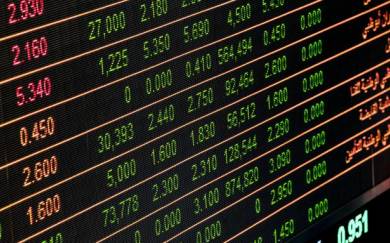


























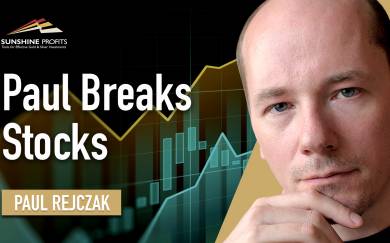
























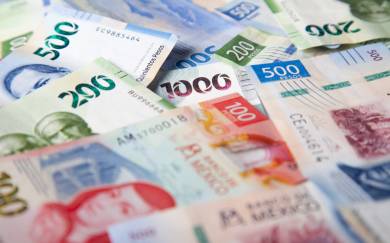













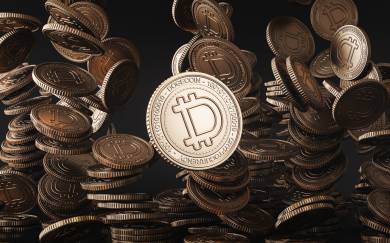


 Saxo Bank 02.12.2021 14:35
Saxo Bank 02.12.2021 14:35





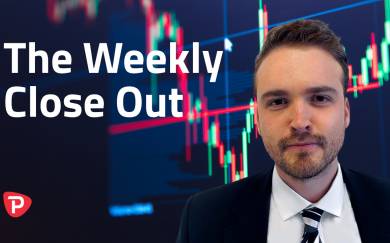





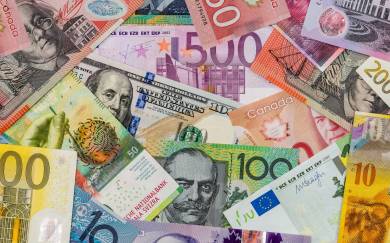












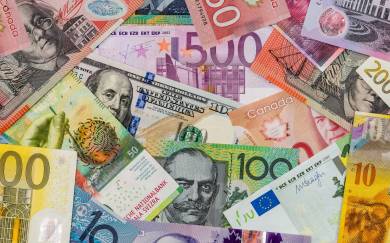















































































 Mikołaj Marcinowski 10.03.2022 14:39
Mikołaj Marcinowski 10.03.2022 14:39





































 Kenny Fisher 24.05.2022 14:12
Kenny Fisher 24.05.2022 14:12

 Rebecca Duthie 31.05.2022 21:09
Rebecca Duthie 31.05.2022 21:09


 Conotoxia Comments 17.08.2022 11:45
Conotoxia Comments 17.08.2022 11:45




 ING Economics 16.02.2023 15:37
ING Economics 16.02.2023 15:37


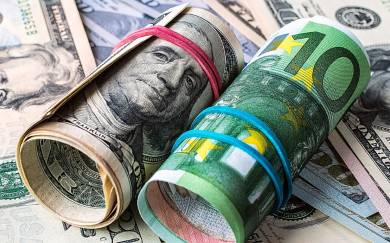
 Enrique Díaz-Álvarez 28.02.2023 09:33
Enrique Díaz-Álvarez 28.02.2023 09:33

 Franklin Templeton 12.04.2023 14:13
Franklin Templeton 12.04.2023 14:13

 InstaForex Analysis 20.04.2023 14:17
InstaForex Analysis 20.04.2023 14:17


